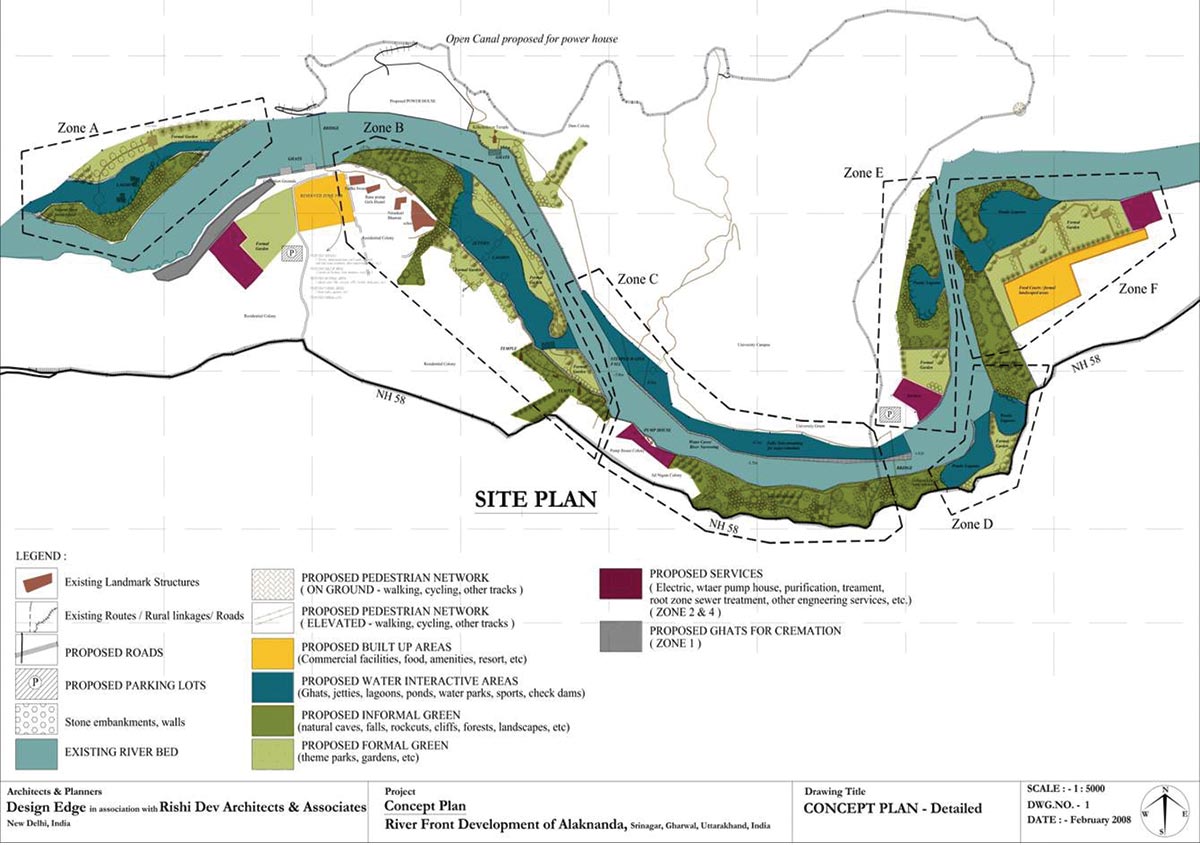
A building is a small part of a larger system in which we live. And that building being green would not matter if the system is failing. So, the built has to contribute back to the environment, and become a part of a whole for it to be green. Architectural practices must go beyond ratings, carbon footprints and technology. Hence, architects need to do more, so that an act at the local level must contribute globally.
It is as easy to Be Green as it is difficult to Achieve Green. General perceptions of architects limit “green” to performance of a building. In Green buildings, the effort to produce less embodied energy in material cannot be the sole answer. The local context and environment, society, culture, economy, ecology and demographics must be considered before indulging in producing and using materials as skins or structures of buildings.
 Mega Urban Planning: Srinagar Project
Mega Urban Planning: Srinagar ProjectIn Green fenestrations in tall building designs, a given vernacular context is most important. While most contemporary products and materials that are used as the skin of the building or designed to decorate and use the fenestrations, are universally applied and expected to perform. Yet the same cannot be done unless the material and design is universally working towards a green environment. The considerations can’t be limited to sun movement, aesthetics, energy gain or loss, and so on.
Fenestrations, apart from embodied energy and energy management, must also move a step ahead and contribute to the larger scheme of buildings, its settings and its ecosystem. The ‘arch’ that was used as an aesthetic and structural member in medieval and contemporary times was once a ‘Sun Shading Device’. Different cultures with different climates defined and redefined this arch into many versions. The ‘Jaali’ in the Indian subcontinent, for instance, finds many versions and usages purely from a climatic point of view. Such master designs later became a way of life in buildings, yet its inception was purely contextual.
Architectural practices must go beyond ratings, carbon footprints and technology. Hence, architects need to do more, so that an act at the local level must contribute globally
I admire...
The city of Chicago has time and again set newer standards of sustainable techniques in planning as well as building designs. The city developed a new concrete that absorbs pollution of traffic. Panels of the same concrete have now become a new architectural vocabulary of the buildings. Thus, the designers didn’t refrain people from using vehicles, as they are inevitable truths of urban agglomerations, but devised newer ways to technologically move ahead in order to control the ill effects. So, the conclusion to learn is that even in nature, pollutants are produced, yet toxins are managed immediately so life can move on.















